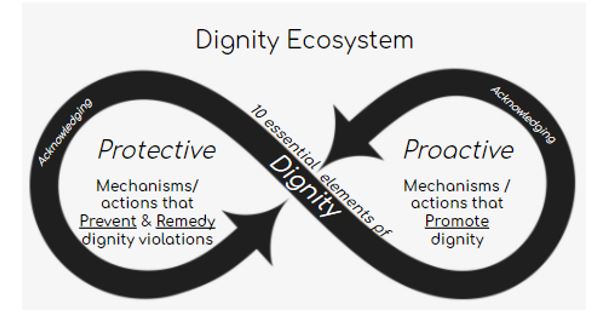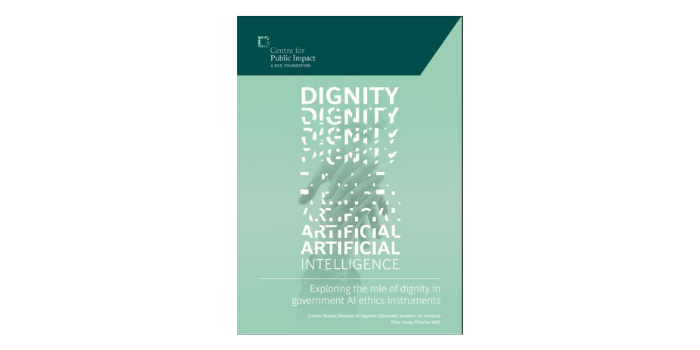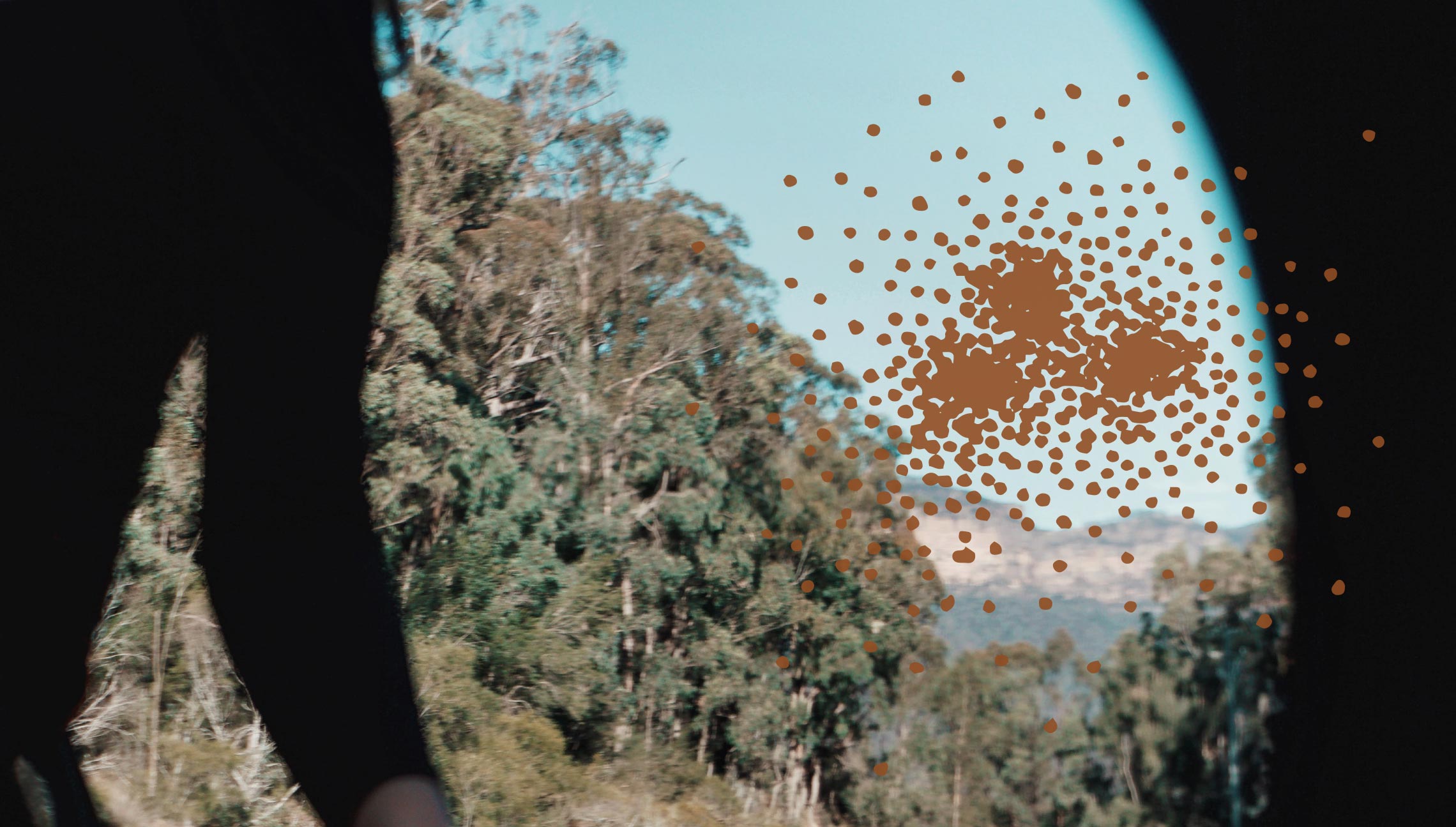This blog was originally published by Lorenn Ruster. This image was created by Lorenn Ruster using a Style Image Transfer AI algorithm developed by Derrick Schultz and Lia Coleman the following images. rom “A pathway through a field of flowers” by World Bank Photo Collection, licensed under CC BY-NC-ND 2.0 and “Graphic HST” by Jayne ~ Twiggy & Opal, licensed under CC BY-NC-SA 2.0.
Last weekend I was doing one of those “big cleanups”. Partly COVID lockdown-induced, partly in anticipation of starting a new chapter with a desire for some relative order in our highly uncertain times.
In the process, I found a “letter to myself”, written as a part of the first few days of the ANU School of Cybernetics (SoCy) Masters of Applied Cybernetics in early 2020.
In it, I wrote about my excitement, fears and trepidation. Weirdly, I also wrote a lot about how hot it was in this small collaboration room we were in for an afternoon (which I’m sure cannot happen now SoCy is in the brand new Birch Building)!
And I scribbled down some areas of interest that I was keen to explore throughout the Masters year.
One of those areas was dignity:

And so I did.
I used the opportunity to build “anything of my choosing” to create a reminder device for my then 91-year old grandmother who has dementia. In the process, ideas around how we could enable and restore human dignity through technologies began to emerge and were captured in this short online course.
By halfway through 2020, I knew I was only scratching the surface. My interest was well and truly piqued about questions emerging at the intersection of dignity and technologies of the future.
At the end of 2020, I was excited by the opportunity of finishing the Masters program by shaping my capstone project in an area I was interested in. Fuelled by this interest in the intersection of dignity and technology, I was very fortunate to find a home for further exploration in doing a capstone research project with the Centre for Public Impact.
The work explored the role of dignity in government AI Ethics instruments. From it, I was able to dive into dignity models such as Harvard’s Dr. Donna Hicks 10 essential elements of dignity. I applied Hicks’ models in new ways and created an ecosystem view of dignity which is rooted in cybernetic concepts in at least four ways.

Firstly, it looks at dignity as an ecosystem — spotlighting relationships, dynamics, feedback and flows. Secondly, it takes an interdisciplinary approach — with foundations in Hicks’ model from the field of international conflict resolution, layered with discourse analysis and applied to technology in a government context across three different jurisdictions, it attempts to embrace plurarity of thought. Thirdly, it serves as a thinking tool (also referred to as a ‘boundary object’) — something that has sufficient common ground that it can assist with conversations across various different groups who come with different backgrounds and interpretations. Finally, it could be said to help governments see themselves as playing a role in a much wider system (being able to see yourself in the system is a part of ‘second-order cybernetics’).
The capstone project was a great way to channel my interests into a research output. Our report, Exploring the role of dignity in government AI Ethics instruments, was published on the Centre for Public Impact website in March 2021.

Dignity & Artifical Intelligence: Exploring the role of dignity in government AI ethics instruments
And following that, a range of things then happened:
Thea Snow (ANZ Director of Centre for Public Impact) and I presented our work at the Response-ability Summit — an annual transdisciplinary event championing collaboration across social sciences and technology to enable responsible technology. We were also invited to feature on a connected podcast to the event (my first ever podcast experience and a good place to get a quick rundown of the work)

Dignity-Centred Technology: Enabling Human Flourishing. With Lorenn Ruster and Thea Snow
I reached out to Dr. Donna Hicks, initially because I was worried we may be polluting the initial intention of her work. She very generously quelled any of those fears with this response: “This is a masterpiece. It takes my breath away. I want to send it to everyone I know… Honestly, I don’t know what to say. It is such a stunning piece of work, and such a profound message to governments worldwide. I don’t know how to thank you for doing this work. You have made my day, week, month, year!”
Paola Oliva-Altamirano, Principal Data Scientist at Our Community applied our tool to her work. She has been creating a classifier tool to better analyse data from SmartyGrants, a grants management system that captures data from government and not-for-profits. Thea and I held a workshop with Paola and her team to unpack the potential power of the Dignity Lens we had developed in her context. We were then able to talk about the experience as we both (completely unplanned) ended up on a Pints of Science panel titled “Ethical Considerations in the Digital Era” (you can listen to the part of the panel here)
Ethical considerations in the digital era
The interest in our work also extended to an industry context when I had the opportunity to host a series of lunchtime sessions as part of the Business For Societal Impact Knowledge Exchange event series. The sessions were attended by sustainability, community and impact professionals working at some of Australia’s largest corporates. I learned a lot from these events about how the framework resonated with this audience.
And we have had some fascinating conversations stemming from people reading the report including with the Harvard Business School Digital Initiative, as well as with a Brazilian Think Tank and a UK-based wellness technology company.
With all of this bubbling, I have felt there is so much more to explore and research around this topic. The more I find out, the more I want to find out. And so, after a fair bit of soul-searching about what’s next, I’ve decided to embark on a PhD with the Australian National University’s School of Cybernetics, to hopefully continue this work and take it to new places.
I’m also very pleased to be continuing my relationship stemming from my Capstone Project with the Centre for Public Impact as a Responsible Tech Collaborator part-time alongside my PhD. We will be continuing to share the work done to date on Dignity & AI with new audiences, connect it to other work simmering within CPI and explore practical applications of our Dignity Lens to government contexts.
It’s very early days. I’ve just started! If you’re reading this with a curious question or an idea or a context where you believe this work could provide value, please get in touch!
Lorenn Ruster is a social-justice driven professional and systems change consultant. Currently, Lorenn is a PhD candidate at the Australian National University’s School of Cybernetics and a Responsible Tech Collaborator at Centre for Public Impact. Previously, Lorenn was a Director at PwC’s Indigenous Consulting and a Director of Marketing & Innovation at a Ugandan Solar Energy Company whilst a Global Fellow with Impact Investor, Acumen. She also co-founded a social enterprise leveraging sensor technology for community-led landmine detection whilst a part of Singularity University’s Global Solutions Program. She is interested in the intersection of technology, cross-sector collaboration, impact & dignity.

